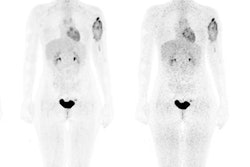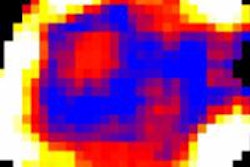FDG-PET may soon no longer be the only option for imaging glucose uptake in tumors. A new project is working to bring that capability to MRI, potentially avoiding radiation exposure for patients and enabling closer monitoring of treatments, according to the European Institute for Biomedical Imaging Research (EIBIR).
Funded by the European Union (EU), the GlucoCEST Imaging of Neoplastic Tumors (GLINT) project stems from an MRI-based method developed by researchers from the University College London for imaging glucose uptake and metabolism in vivo. That method, called glucose chemical exchange saturation transfer (glucoCEST), was shown in a 2013 Nature study to be sensitive for detecting native glucose uptake in tumors. Unlike FDT-PET, the technique doesn't expose patients to radiation.
Launched on 1 January, the four-year GLINT project will include the University College London; Tel Aviv University in Israel; the University of Torino in Italy; Max Planck Society in Germany; the University of Zurich in Switzerland; image analysis software firm Olea Medical in France; contrast developer Bracco Imaging in Italy; and the EIBIR in Austria. GlucoCEST inventor Xavier Golay, PhD, of the University College London serves as GLINT scientific coordinator.
The benefits of the technique may also extend beyond tumor imaging, such as providing metabolic imaging for other noncancer diseases, according to researchers involved in GLINT. For example, other metabolic products such as proteins could be imaged, according to Klaus Scheffler, PhD, of the Max Planck Institute for Biological Cybernetics in Tübingen, Germany. As a result, the GLINT project will also work to develop other MRI techniques.



















